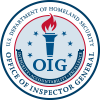FEMA did not use its SFM initiative to ensure that Public Assistance (PA) funds were obligated in accordance with Federal, Department, and component requirements. Specifically, FEMA obligated PA funds for 83 projects from fiscal years 2017 through 2019 that we reviewed, even though the subrecipients did not need the funding until after 180 days, which made them eligible for incremental obligation under SFM. This occurred because FEMA did not provide adequate oversight to its Regions. FEMA relied on the Regions’ decisions to determine whether subrecipients’ projects were eligible for SFM funding, without ensuring there was sufficient supporting documentation to validate the determinations. This increases the risk of projects being over obligated. As a result, FEMA is not meeting the intent of SFM, which is to better manage resources in the Disaster Relief Fund to fulfill present and future disaster funding requirements. We made two recommendations that, when implemented, should improve FEMA’s management and oversight of the Disaster Relief Fund. FEMA concurred with the recommendations.
Open Recommendations
| Recommendation Number | Significant Recommendation | Recommended Questioned Costs | Recommended Funds for Better Use | Additional Details | |
|---|---|---|---|---|---|
| 1 | No | $0 | $0 | ||
| Update the FEMA Recovery Standard OperatingProcedure, SOP 9570.24 – Strategic Funds Management – ImplementationProcedures for the Public Assistance Program, at a minimum, to: provide criteria for documentation required for subreceipients’drawdown schedule for funding projections to determine whether fundsare needed within 180 days; and require Regions document the basis for decisions and maintain supportfor these decisions in Grants Manager and in Emergency ManagementMission Integrated Environment (EMMIE). | |||||
| 2 | No | $0 | $0 | ||
| Develop a mechanism to ensure that the Office ofResponse and Recovery monitors the implementation of the Strategic FundsManagement Initiative in accordance with policy | |||||


